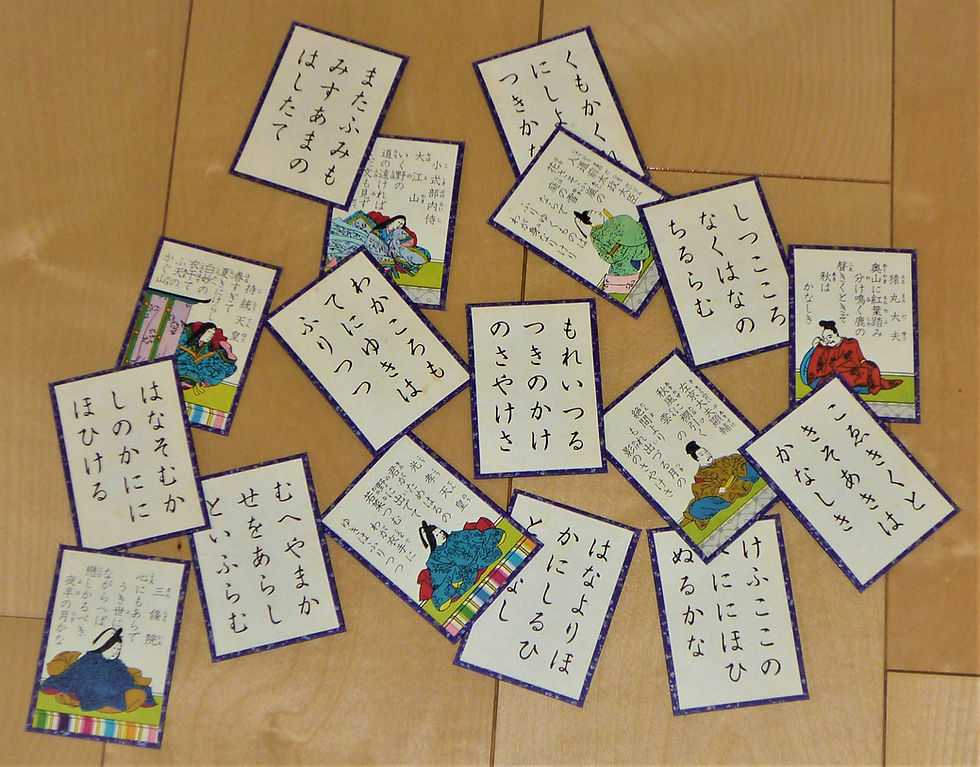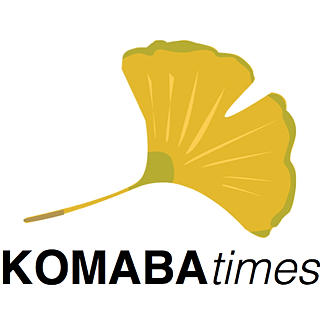A Free Ticket to the Heian Period #JapaneseClassics @UTokyoLibrary
- Komaba Times
- Feb 1, 2019
- 4 min read
Updated: Oct 10, 2019
By SAYUMI TAKE

Just a few of my especially favorite Hyakunin isshu cards (used in karuta) | Photo by author
Today, Japan is internationally famous for its anime and manga culture, but its classic literature is also a hidden treasure. Especially during the Heian Period, which lasted roughly from the 9th to 13th century, many distinguished classical literature were born. Here is a list of recommended Japanese classics of which the English-translated versions can be found in the library at the University of Tokyo. Flip through the pages and enjoy the free time travel as the poems and stories come back to life. Don’t forget to hashtag your favorite!
One Hundred Poets, One Poem Each #百人一首 #Ogura-hyakunin-isshu #tanka #LightRead
Hyakunin isshu can roughly be translated into “one hundred people, one poem each”. The poems all take the form of tanka, a style that consists of 5 lines and 31 syllables. During the Heian Period, tanka was the main tool of communication between people, and people would express all kinds of emotions in tanka, from love and excitement to loneliness, anger and even sarcasm. Creating tanka was also a common pastime for aristocrats; they would have a poetry jam, or gatherings where they competed over who could come up with the best tanka. Because so many tanka were going around, renowned kajin (tanka poets), as well as emperors and political figures wanting to gain the support of the people compiled the best into a tanka collections. Ogura Hyakunin isshu is one of such collections, and probably the most famous, compiled by Fujiwara Teika, a distinguished kajin from the Kamakura Period (12-13th Century).
Tanka is a style of poems with numerous rules, such as having to follow the 5-7-5-7-7 tempo and needing to include at least one seasonal term. Teika’s selection of 100 tanka created during the 7th to 13th centuries are simply outstanding in that they convey so much meaning even while they are being bound by the rules, and one cannot help but wonder how witty the ancient poets were. Moreover, the emotions woven in the 31 syllables are so vivid and strong that it seeps out from the words and into the readers’ hearts.
It is not an exaggeration to say that every Japanese has read the 100 tanka in the Ogura Hyakunin isshu at one time or another. Memorizing the 100 tanka is common summer vacation homework for children in Japan. The 100 tanka are also used in a game of karuta, or Japanese card game, and Ogura Hyakunin isshu karuta tournaments are held throughout the year, with the final game being played during the New Year holidays. Go on Youtube and be prepared to be surprised at how the karuta plays out!
(One hundred poets, one poem each : a translation of the Ogura Hyakunin Isshu / Peter McMillan. Available at Hongo, Komaba, Kashiwa)
Tale of Genji #源氏物語 # Genji-Monogatari #romance #OldestInTheWorld #LongButWorthIt
The Tale of Genji is said to be the oldest novel in the world. There are many things unknown about it, such as who the author is or when exactly it was written, but one solid fact is that it is a superb story. It is a romance novel about Hikaru Genji, a beautiful godlike figure but with playboy qualities, and his emotional conflicts as he meets many women from all different backgrounds. There are more than 200 characters that come up in the novel, but the author succeeds in sketching every single one of them in his/her own light with such reality that readers come under the illusion that they know and have met the characters somehow. As it is impossible to keep track of who’s who, a character map will come in handy while reading.
(The tale of Genji / Murasaki Shikibu ; translated by Dennis Washburn, available at Hongo. Or The tale of Genji / Murasaki Shikibu ; translated from the Japanese by Edward G. Seidensticker , available at Hongo and Komaba. Note: Many translations have been published, with Washburn’s being published most recently in 2015. Seidensticker’s is said to be relatively simple and easy to read.)
Tales of Times Now Past #今昔物語 #Konjyaku-Monogatari #folktales #ShortButThoughtful
The largest collection of Japanese folktales, Tales of Times Now Past contains over 1000 short stories, many of which reflect Buddhist attitudes towards life. The title comes from the opening phrase of every story, which is similar to “Once upon a time….” Various characters appear in the story, from aristocrats, samurai, farmers and priests, to animals and monsters. Famous authors in the modern period have also been influenced by the tales, one of them being Ryunosuke Akutagawa (1892-1927), a graduate of the University of Tokyo.
The stories are short and light, but the messages they convey can often be intriguing. For example, one story tells of a man who is forced to choose between saving his wife’s life or his son’s life. What did the man do? The story ends with the man making a decision, but the reasons given for his decision is surprising and shocking. Borrow the book and find out!
(Tales of times now past : sixty-two stories from a medieval Japanese collection / Marian Ury, available at Komaba)





Comments